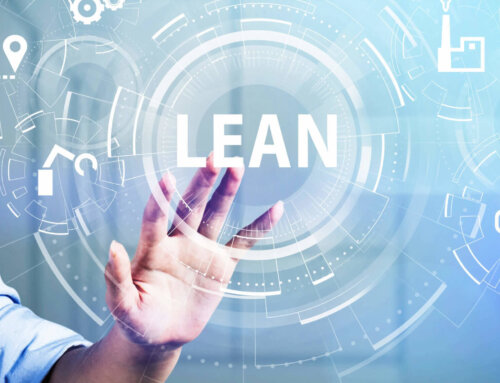By Gene Russell, Manex President & CEO
In our previous blog, we discussed immediate issues facing manufacturers reopening after the Covid-19 shelter in place. This week I want to pivot to a topic about a future technology driving Manufacturing 4.0 or, the Fourth Industrial Revolution, and that is artificial intelligence (AI( in Manufacturing.
AI is an emerging area of computer science that is making its impact on manufacturing processes. AI has actually been around since before my time. John McCarthy, who coined the term artificial intelligence in 1956, was also famous for saying that “as soon as it works, no one calls it AI anymore.” Artificial Intelligence can do many things and can improve a broad range of business processes. AI development has been accelerating rapidly since the early 2000’s as has the investment in AI by big tech and venture firms. The largest advances have been in computer vision, natural language processing, and automated decision making.
The key areas for AI disruption and usefulness are:
- Optimization
- Transformation
- Reinvention
As you have already guessed, good data and lots of it are required to develop useable, accurate AI. This particular aspect is not always as easy as it sounds and can not be brushed aside. (Garbage in and garbage out is still a truism.) Once a company has large-quality data, AI can provide a clear understanding of the business, like never before. AI can work around the clock at fantastic precision levels.
Manufacturing use cases include:
- Quality checks using camera vision which is much more accurate than the human eye and the human capacity for speed
- Prediction of failure modes
- Predictive maintenance using machine learning
- Generative Design using machine learning. (A great example is AutoDesk’s digital twin software that was first used by NASA. A virtual twin to a product or service is created to build and test equipment prior to manufacturing.)
- Better use of data. While this may be a duh or doh!, kind of area it’s a killer application of AI which can drive better supply chain management, risk management, sales forecasting and price forecasting. Why? Tons of quality data + immense cloud computing power + great AI software beats a guy like me with a spreadsheet every time.
- Robots with interpretative intelligence instead of programmed movements. Impressive!
- Customer Service. Today your exposure to e-commerce and customer service chatbots may be your first exposure to AI. This is a great AI application if a business has a lot of agents answering routine questions. With chatbots intelligence, the questions can be more far-ranging and intelligent. The chatbot has a variety of machine learning and natural language processing powers to figure out what you want all day every day.
All of these achievements are the very beginning of what we will see in our lifetimes. They all can be considered artificial narrow intelligence (ANI). Often referred to weak AI refers to a computer’s ability to perform a single task extremely well, like playing video games or a robot solving a puzzle. Artificial general intelligence (AGI) is achieved when a program can perform any individual task that a human could. Many achievements are starting to become more general, including robots running as seen in many Boston Dynamics videos on YouTube.
Over my career, it’s been fun to look at future predictions for “car phones,” fax machines, word processors, desktop computing, laptop computing, and more. The same is true for AI. Two key areas signaling the importance and future growth of any industry or technology are: the players and the investors. Looking at VC deal volume in U.S. artificial intelligence, machine learning, and related start-ups by stage on CrunchBase News, we see that investments have exploded beginning in 2012 at all levels but particularly in seed, angel and early stage. The companies in the space are a mix of large tech companies, large traditional companies and start-ups. Everyone at the top including Google, Facebook, Microsoft, then on to Pepsi, G.E., Ford and down to a multitude of early-stage health, robotics and other companies. These are all solid indications of the future for AI. However choosing the technology, the sector and of course the early-stage company are all fraught with risk, even from a small to midsized factory making decisions in this area. In future blogs, we will look at promising technologies, companies and what they do.
I also love the bold long-term predictions such as the one from Accenture and Frontier Economics that estimate that by 2035, AI-powered technologies could increase labor productivity by up to 40% across sixteen industries, including manufacturing. In the same paper, the authors claim that AI could add an additional $3.8 trillion gross value added to the manufacturing sector, which is just under a 50% increase compared to business as usual. The operative words are “could and up to,” however there is no doubt in my mind after studying this technology and its applications that it will be huge.
I hope you enjoy this diversion into the near and distant future. Much of what I currently know about AI, I learned from Executive Education at Berkeley Haas School of Business. The course is online, and I highly recommend it if you are serious about moving forward either in this industry or deploying the tools in your factory. Alexa or Siri can find it for you while demonstrating their abilities in natural language processing AI.
About the Author
Gene Russell is President and CEO of Manex and has over 30 years of senior executive strategic planning, operational management, and consulting experience in the manufacturing and technology sectors. With his extensive knowledge of manufacturing operations, he has developed and implemented key strategic initiatives for companies, allowing them to improve performance and achieve profitable growth. He can be reached at grussell@manexconsulting.com.


